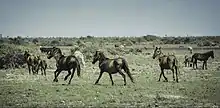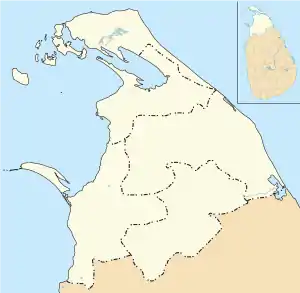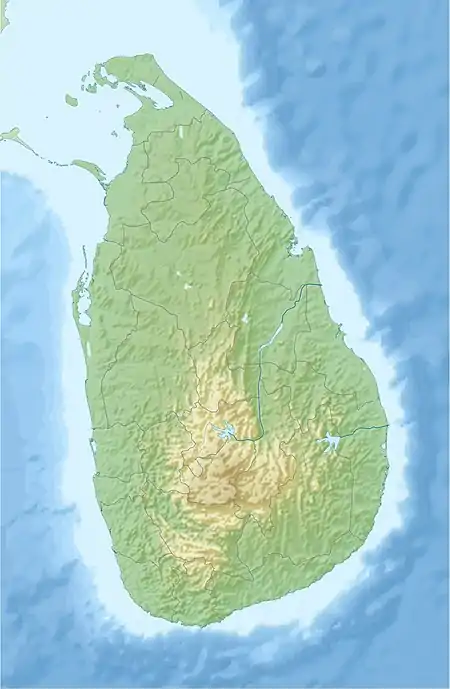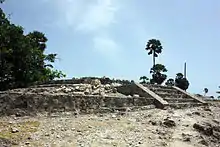Neduntheevu
Neduntheevu or Nedunthivu (Tamil: நெடுந்தீவு, romanized: Neṭuntīvu; Sinhala: ඩෙල්ෆ්ට්, romanized: Ḍelfṭ) (also known by its Dutch name Delft) is an island in the Palk Strait, northern Sri Lanka. This island is named as Delft in the Admiralty Chart unlike the other islands, whose names are Tamil. The island's area is 50 km² and it is roughly oval-shaped. Its length is 8 km and its maximum width about 6 km.

| Native name: நெடுந்தீவு ඩෙල්ෆ්ට් | |
|---|---|
 Neduntheevu  Neduntheevu | |
| Geography | |
| Coordinates | 9°31′0″N 79°41′0″E |
| Administration | |
| Province | Northern |
| District | Jaffna |
| DS Division | Delft |
| Demographics | |
| Languages | Tamil |
| Ethnic groups | Sri Lankan Tamils |
| Additional information | |
| Time zone |
|
Neduntheevu is a flat island surrounded by shallow waters and beaches of coral chunks and sand. It is home to a small population of Tamil people, mostly living in quiet compounds close to the northern coast.[1] The vegetation is of a semi-arid tropical type, with palmyra palms, dry shrubs and grasses that grow on the pale grey porous coralline soil. Papayas and bananas grow close to the local people's homes. In the western coast of the island there are remains of a 1000-year-old temple built by the Chola Dynasty, as well as the ruins of a Dutch colonial fort. The water is slightly brackish, and it is taken from shallow wells using buckets made from palmyra palm leaves.[2] A naval battle was fought off the coast of the island in 2008 during the Sri-Lankan Civil War. There are feral ponies on the island, descendants of forebears abandoned there in the Dutch period.
The island was named after the Dutch city of Delft by Rijckloff van Goens. He named the eight most important islands after Dutch cities.
Inscriptions
The marine archaeologists from the Maritime Archaeology Unit (MAU) of Central Cultural Fund (CCF) established in Galle in their archaeological explorations carried out in Delft Island in August 2017 have discovered two Tamil inscriptions dated to 14-15 century.[3]
See also
Gallery
 Growing Rock, observed to be accreting
Growing Rock, observed to be accreting Giant footprint, also known as Adam's or Shiva's footprint
Giant footprint, also known as Adam's or Shiva's footprint Stable remains
Stable remains.JPG.webp) Wild ponies
Wild ponies.JPG.webp) Pigeon house (dovecote), used by colonial powers
Pigeon house (dovecote), used by colonial powers%252C_Neduntheevu.JPG.webp) Baobab (Adansonia digitata), native to East Africa, introduced by Arabian sailors in 7th century.
Baobab (Adansonia digitata), native to East Africa, introduced by Arabian sailors in 7th century. Coral walls, a common sight
Coral walls, a common sight Ruins believed to be an ancient temple, stupa or Vedi Arasan fort.
Ruins believed to be an ancient temple, stupa or Vedi Arasan fort. The Manmade Coral Walls of Delft
The Manmade Coral Walls of Delft
